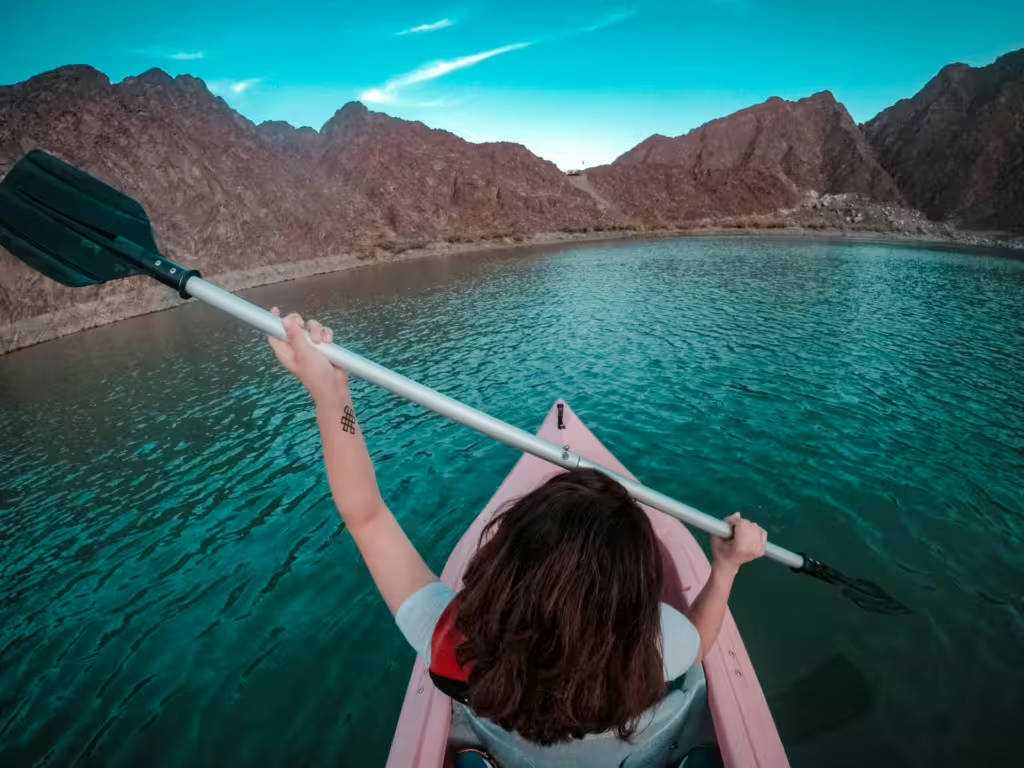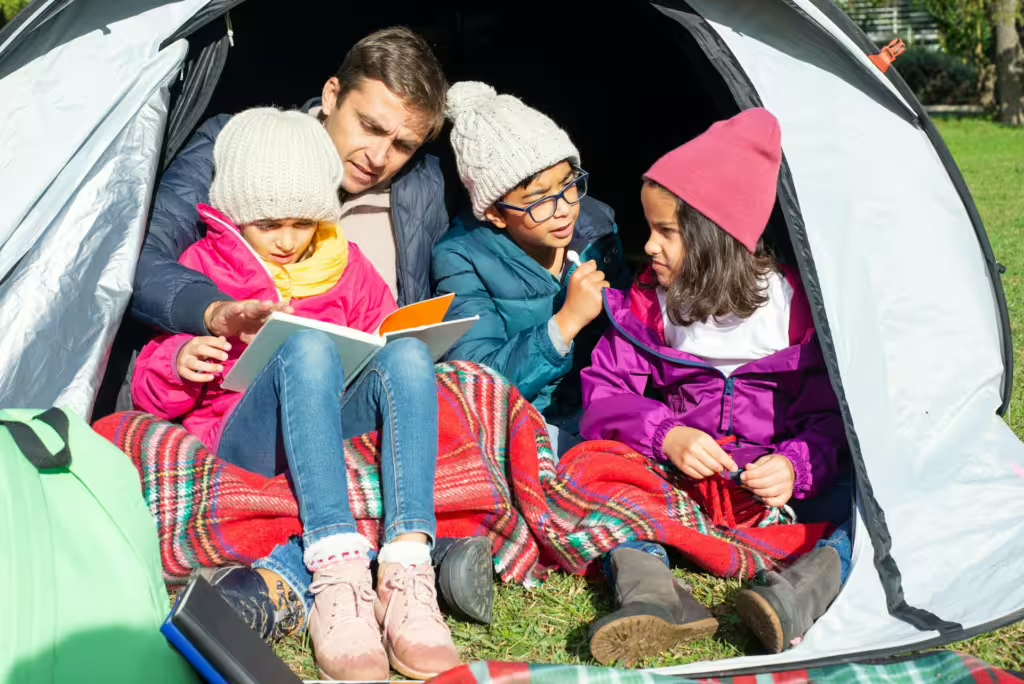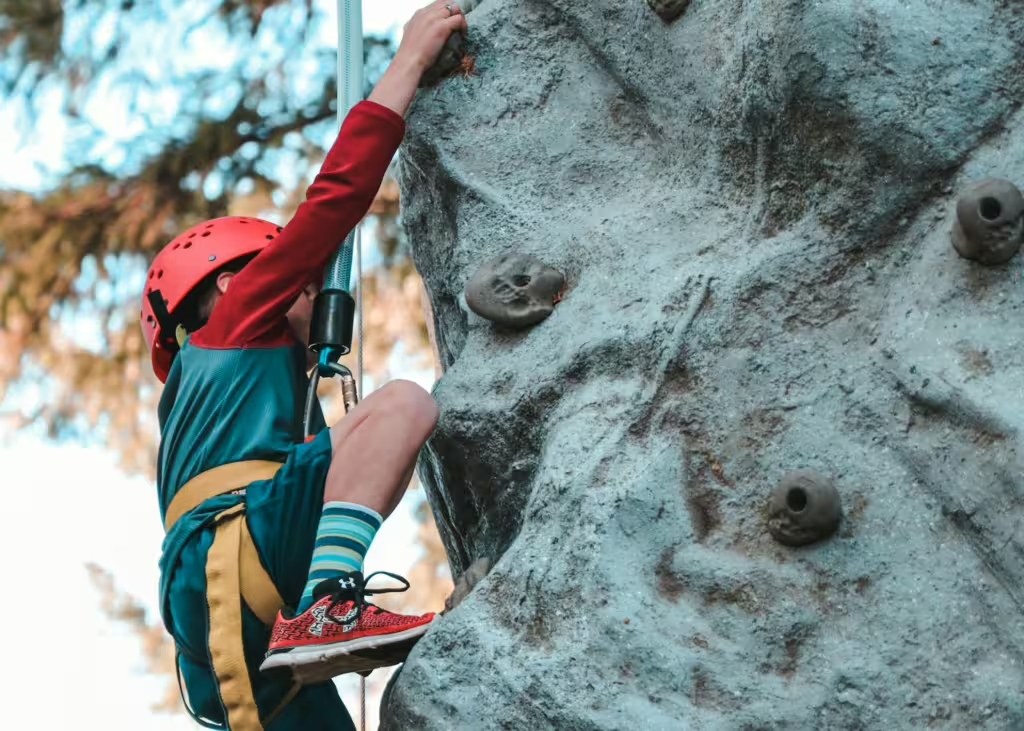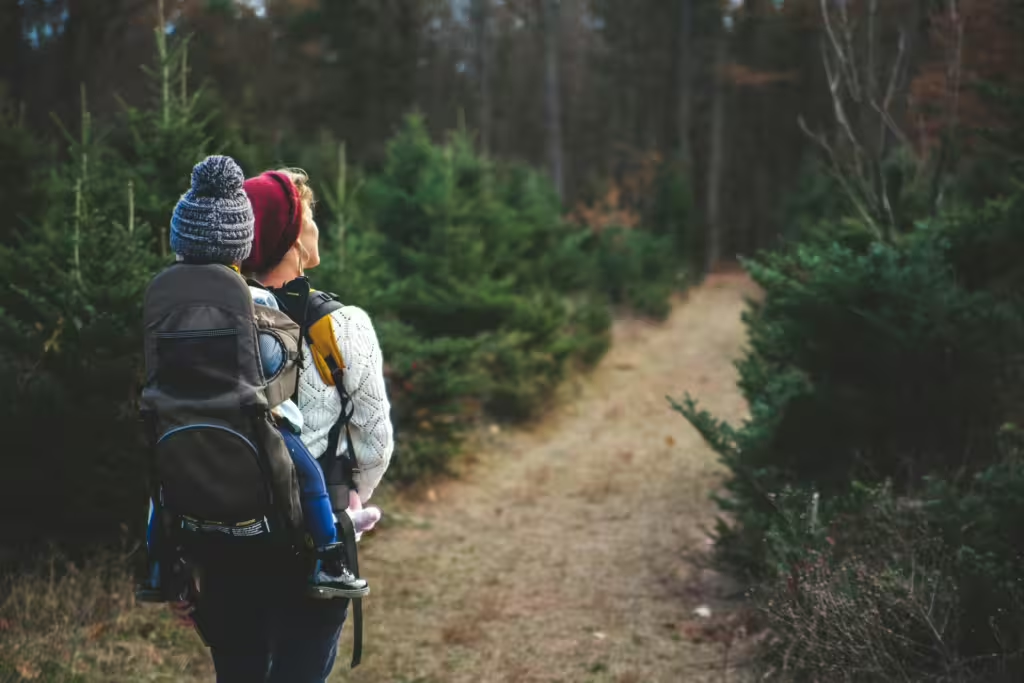In this day and age, the idea of camping with one’s family feels more like a luxury than a relaxing weekend in nature. It’s not only that some camping excursions are expensive, it is also the fact that kids these days don’t really have the same outdoor experiences that their parents did. Nature is slowly being sidelined, forced into smaller and smaller patches of natural wilderness that abut enormous, engulfing cityscapes. But it is precisely because of nature’s ever-waning existence, that outdoor wilderness sports are so important to young children.
Engaging in outdoor sports is not just a good way to have fun and get exercise—it’s also an incredible way for children to reconnect with the natural world. Activities like hiking, kayaking, and trail running allow kids to immerse themselves in the environment, observe wildlife, and appreciate the beauty of the great outdoors.
In this article, we will take a journey into the wilderness so that we can explore how these sports bring children closer to nature. We will delve into a number of different outdoor sports, highlighting the benefits of each. In the end, we hope that you as parents will bring your kids out into the woods for a spell, to foster a love for wildlife that will last a lifetime, and inspire our children to continue to pursue exercise and to protect our planet wherever they can.
Hiking: A Pathway to Discovery
Hiking is one of the easiest ways for anyone to experience nature up close. With every step you and your children take, you can explore forests, mountains, trails, and valleys while witnessing the secret world that lies out in the the wilderness. It doesn’t even have to be a long, difficult hike through uncharted woodlands, either; simply a nature walk through a local park or preserve will do the trick.
Discovering Wildlife
Though some hiking trails are specifically tailored to be arduous or isolated, many beginning trails wind through natural habitats teeming with life. Kids might look up to spot deer grazing in a nearby meadow, hear the chirp of birds as they flit around in the trees above, or stumble upon a family of squirrels collecting nuts for the coming winter.
If you or your guide are particularly nature-savvy (of if one of you was in the Scouts at one point) you might be able to help kids identify animal tracks, spot nests, or observe insects up close as you make your way through the woods. Not only do such diversions help break up the monotony of a long walk, they can help educate your children on matters that might interest them, but that they have thus far been unable to observe in real time.
Learning About Ecosystems
Hiking is a great way to teach kids about how the different parts of an ecosystem work together. You can point out how moss grows in shady, moist spots or how trees provide shelter for countless animals. By observing these types of interactions, young hikers gain a deeper understanding of how delicate and interconnected nature is.
Exploring Biodiversity
Remember, every unexplored trail offers something new for kids to discover. In a rainforest, for instance, hikers can marvel at vibrant flowers and tiny frogs. In a desert, they might get to see lizards basking on rocks or discover how cacti survive with little water. This diversity that exists within all these different biomes is what keeps hiking so exciting and educational.

Kayaking: Exploring Life on the Water
Think of the serenity of you and your child, gliding across rivers, lakes, or coastal waters in a kayak. There are few better or more thrilling ways to connect with aquatic ecosystems and work the core muscles. Moreover, this quiet, non-intrusive physical activity is absolutely perfect for observing wildlife.
Encountering Aquatic Animals
Kayaking offers children a front-row seat to watch animals in their natural habitats. In rivers, they might get to paddle alongside a bale of turtles sunbathing on half-submerges logs. On a lake, they might encounter a curious otter swimming alongside the boat. For those that live near calm, coastal waters, the sight of seals, dolphins, or even whales can be quite common, depending on the climate
Appreciating the Water Cycle
Kayaking isn’t just good for a full-body workout, it helps children understand the importance of water as it relates to the natural world. By paddling through clear streams or murky marshes, they can see how different water sources support different types of natural life. Observant kids may notice how plants like reeds and water lilies stabilize shorelines or how fish dart among submerged logs to avoid predators or hunt smaller prey.
Learning Responsibility
Kids also learn to respect water ecosystems as they kayak. In many cases, they may witness the effects of pollution firsthand, either by seeing piled up trash or discolored water. This might drive home for them why protecting rivers, lakes, and oceans is so critical.
Trail Running: Speeding Through Nature’s Playground
Trail running is like hiking at a much faster pace and on paths with much less detritus, This activity combines the joy of running with the excitement of exploring outdoor paths that your children may never have seen before. It is a way for more athletic kids to experience the sights, sounds, and smells of nature while moving briskly about that world.
Boosting Observation Skills
Though running trails are a bit cleaner than hiking ones, kids still need to be mindful of their surroundings. Running through trails sharpens kids’ observation skills and they learn to quickly scan for roots, rocks, and branches as they go. If they are lucky, as well as observant, they might even catch rare glimpses of wildlife, such as a hawk soaring above the trees or a rabbit darting into the bushes.
Feeling Connected to the Land
Trail running offers kids and teens a unique sensory connection to the environment that cannot be found simply meandering through. The sound of gravel underfoot, the rustle of leaves, and the scent of wildflowers create a vivid sensory experience that’s impossible to find indoors.
Building Appreciation for Natural Spaces
By regularly spending time in nature, young trail runners might develop a sense of ownership and pride in preserving their local, natural spaces. In many ways, being in these places often might make kids more keenly aware of the impact humans have on these wild places, and could foster in them a commitment to protecting trails and parks in their neck of the woods.

Camping: A Home in the Wild
We have come to it at last, the consummate nature activity for families looking to “get away from it all.” Camping combines many of the outdoor activities we have discussed thus far, including kayaking, hiking, rock climbing, and fishing. Also, by virtue of the fact that it is generally done outdoors and in a tent, camping offers kids and families a duration of full immersion in the natural world. Camping is chance for children to live among the trees, stars, and wildlife, even if it’s just for a night.
Observing Nocturnal Creatures
Though daytime activities are fun and essential, camping, in general, offer children an opens window to the nocturnal world. Kids who stay up after dark might get to hear owls hooting, spot fireflies lighting up the night, or see bats darting through the sky in search of insects. These myriad nighttime encounters need not be spooky or scary, but ought to inspire curiosity about the many animals that come alive after the sun has set.
Learning Survival Skills
For those parents that want a better “roughing it” experience, camping can teach children a multitude of essential outdoor skills, such as setting up a tent, starting a fire, or identifying edible, and inedible plants. Activities like these deepen a child’s connection to nature and gives them the confidence to explore it responsibly.
Building Environmental Awareness
Spending an extended amount of time in the wild offer kids a chance to notice how nature works as a whole. The more they see, they more they can learn. It allows them the opportunity to respect nature from a distance, but to leave no trace of their passing once they have gone. Such awareness further encourages them to respect and protect the environment.
Biking Through Nature’s Trails
Cycling on forest paths, mountain trails, or coastal roads is not exactly easy, so we would recommend that only seasoned bikers and young athletes with experience try this. Trail biking combines fitness and exploration, offering ambitious campers a fantastic way to cover more ground while staying close to nature.
Spotting Wildlife
As they ride their way through the forest paths, bikers often encounter animals that would be harder to see on foot. For instance, a shy fox might cross the path, or a heron could take off from a nearby pond as they pass it by. Taking a few quick stops along the trail offer children opportunities to observe nature more closely, while giving a bit of respite to winded riders.
Exploring Different Terrains
Trail biking introduces kids to various landscapes, from rolling hills to rugged mountain paths. Each terrain that they find themselves on presents unique challenges and rewards. Why, reaching the crest of a difficult hilltop with a panoramic view could be a reward in and of itself, as could navigating a shady forest path that gives relief from the heat of the afternoon sun.
Promoting Green Transportation
Similar to these other eco-friendly activities, biking comes with its own ecological lessons for kids. This mode of transportation highlights the importance of eco-friendly travel, so that children can see firsthand how using bikes instead of cars reduces pollution, thereby protecting the very environment they have come to enjoy.
Fishing: Patience Meets Adventure
Ron Swanson of Parks and Rec once said, “Fishing relaxes me. It’s like yoga except I still get to kill something.” While this may be a bit more harsh than we’d like to be on Cultured Athlete, the quote is funny and true enough that we thought it appropriate. The truth is, fishing can be quite relaxing. In general though, it provides a unique combination of patience, relaxation, and excitement. At the same time, fishing also carries valuable lessons for children on the nature or responsibility and the on respect for nature itself.
Understanding Water Ecosystems
While they fish alongside their parents, kids get the chance to observe the aquatic world around them. They get so see how fish behave and interact with their environment, and learn about the importance of clean water. At the same time, they are also treated to lessons about the important role that fish play in the food chain.
Practicing Sustainable Fishing
Catch-and-release practices are very important for beginning fishing lessons. This tactic teaches kids to respect marine life, ensuring that they only take what they need and don’t needlessly disrupt aquatic ecosystems. Discussions about overfishing and habitat destruction can be very helpful during the fishing experience and may even inspire a sense of responsibility for protecting aquatic species.

Rock Climbing: Reaching New Heights in Nature
Scaling cliffs and rock formations combines physical challenge with a deep appreciation for the natural world. Rock climbing brings kids face-to-face with some of the most stunning panoramic views on the planet, while testing the limits of their capability. Note that this particular version of the sport is likely for advanced climbers. If your child has never climbed before, you might want to try them on the basics first. A lesson on beginner rock climbing can be found here.
Encountering Unique Ecosystems
Rock climbers are often allowed to explore areas that other folks cannot even reach. They might happen upon the unique home of some specialized plants and animals, like rare lichens growing on cliff faces or secret birds nesting in mountain crevices.
Cultured Athlete Says…
As you can see, outdoor activities are more than just family fun—they have the potential to create lifelong connections between our children and the rapidly-declining natural world. When children experience the joy of observing wildlife, just as we did as kids, they develop a deep sense of responsibility to protect these environments so that their children can experience the same. The sports mentioned here are more than just ways to get around and see nature, they are the keys to a lifelong appreciation for the one world we have; and one we need to keep protecting, no matter what.
Discover more from CulturedAthlete
Subscribe to get the latest posts sent to your email.






